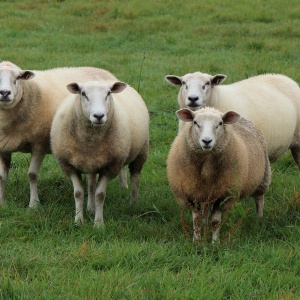
This paper uses economic models to calculate the extent to which both supply-side and demand-side measures could reduce non-CO2 greenhouse gas emissions from the agricultural sector, depending on carbon price.
Between 1990 and 2015, the paper says, global agricultural non-CO2 emissions have increased by 33% (the main sources being synthetic fertiliser, manure, and enteric fermentation in ruminants) while agricultural production has increased by around 70%. Without mitigation, the paper predicts that agricultural non-CO2 emissions would rise by 37% to 67%, relative to 2010 levels, driven by “additional demand for agricultural commodities from a growing and wealthier world population that outpaces GHG efficiency gains through productivity increases.”
The paper then calculates the non-CO2 emissions savings that could be made by the agricultural sector for a range of different carbon prices. The carbon prices are assumed to be the same throughout the world.
Using a carbon price of US$20 per tonne of CO2 eq. in 2050, agricultural non-CO2 emissions could be reduced by 0.8 to 1.4 GtCO2e yr−1 by 2050 using supply-side measures, or by an additional 0.6 GtCO2e yr−1 with the additional measure of dietary shifts towards lower meat consumption. For comparison, 2015 agricultural non-CO2 emissions were 5.7 GtCO2e yr−1.
The authors say that a carbon price pathway in which the price is US$950 per tonne CO2 eq. by 2050 is compatible with limiting climate change to 1.5°C above pre-industrial temperatures. In this case, agricultural non-CO2 emissions could be reduced by 2.9 to 4.9 GtCO2e yr−1 using supply-side measures, and by an additional 0.2 GtCO2e yr−1 assuming dietary change.
Abstract
Agricultural methane and nitrous oxide emissions represent around 10–12% of total anthropogenic GHG emissions and have a key role to play in achieving a 1.5 °C (above pre-industrial) climate stabilization target. Using a multi-model assessment approach, we quantify the potential contribution of agriculture to the 1.5 °C target and decompose the mitigation potential by emission source, region and mitigation mechanism. The results show that the livestock sector will be vital to achieve emission reductions consistent with the 1.5 °C target mainly through emission-reducing technologies or structural changes. Agriculture may contribute emission reductions of 0.8–1.4 Gt of CO2-equivalent (CO2e) yr−1 at just US$20 per tCO2e in 2050. Combined with dietary changes, emission reductions can be increased to 1.7–1.8 GtCO2e yr−1. At carbon prices compatible with the 1.5 °C target, agriculture could even provide average emission savings of 3.9 GtCO2e yr−1 in 2050, which represents around 8% of current GHG emissions.
Reference
Frank, S., Havlík, P., Stehfest, E., van Meijl, H., Witzke, P., Pérez-Domínguez, I., van Dijk, M., Doelman, J.C., Fellmann, T., Koopman, J.F. and Tabeau, A., 2019. Agricultural non-CO2 emission reduction potential in the context of the 1.5° C target. Nature Climate Change, 9(1), p.66.
Read the full paper here. See also the Foodsource chapter How can we reduce food-related greenhouse gas emissions?












Post a new comment »